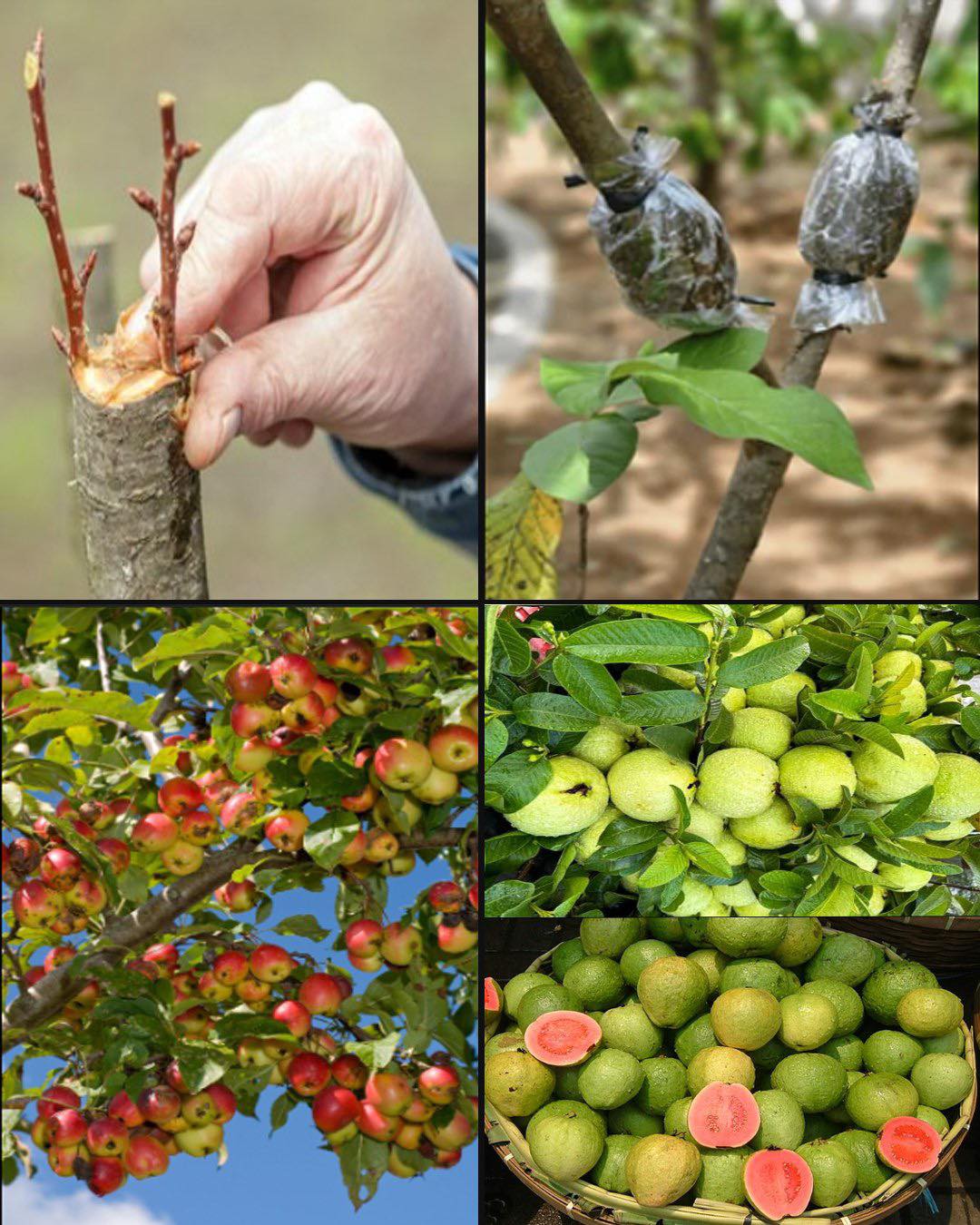Grafting fruit trees is an ancient horticultural technique that allows growers to combine the desirable traits of different varieties into a single tree. Whether you’re aiming to improve disease resistance, increase yield, or simply diversify your orchard, mastering the art of grafting can be immensely rewarding. However, timing and technique are crucial for successful grafting. In this article, we’ll delve into the intricacies of grafting fruit trees, exploring the best practices and the optimal timing for this transformative process.

Understanding Grafting
Grafting is the process of joining two different plants together to create a new hybrid organism. In fruit tree grafting, the scion (the upper part of the graft) is selected for its desired fruit characteristics, while the rootstock (the lower part) provides the foundation for growth and support. When done correctly, grafting allows the scion to flourish using the rootstock’s strong root system.
The Importance of Timing
Timing plays a pivotal role in the success of fruit tree grafting. Generally, the optimal time to graft fruit trees is during the dormant season, typically in late winter or early spring before the trees break dormancy. This period, known as the “window of opportunity,” provides the ideal conditions for successful grafting, as the trees are less prone to stress and sap flow is minimal.

Choosing the Right Grafting Technique
Several grafting techniques are used in fruit tree cultivation, each with its own advantages and applications. Some common techniques include:
Whip and Tongue Grafting: This technique involves making matching cuts on both the scion and rootstock, allowing for a snug fit between the two pieces. Whip and tongue grafting is preferred for its strong union and compatibility with a wide range of fruit tree species.
Cleft Grafting: In cleft grafting, a vertical slit is made in the rootstock, and the scion is inserted into the cleft. This method is particularly useful for rejuvenating old or damaged trees and is relatively straightforward for beginners.
Bud Grafting: Also known as T-budding, bud grafting involves inserting a single bud from the scion into a T-shaped incision on the rootstock. This technique is commonly used for propagating fruit trees with thin bark, such as citrus.
Steps for Successful Grafting
Regardless of the technique employed, successful grafting requires attention to detail and precision. Here’s a step-by-step guide to grafting fruit trees:
Prepare the Scion and Rootstock: Select healthy, disease-free scion wood and rootstock of similar diameter. Make clean, angled cuts on both pieces to ensure maximum surface contact.
Match the Cuts: If using a technique like whip and tongue grafting, ensure that the cuts on the scion and rootstock align perfectly, allowing for a tight connection.
Secure the Graft: Use grafting tape or rubber bands to bind the graft tightly, preventing movement and promoting healing.
Protect the Graft: Apply grafting wax or sealant to the exposed surfaces to prevent drying out and reduce the risk of infection.
Monitor and Maintain: Keep the grafted tree in a sheltered location with adequate moisture and protection from harsh weather conditions. Monitor the graft site regularly for signs of growth and adjust care as needed.
Grafting fruit trees is a skill that combines science, art, and patience. By understanding the principles of grafting and mastering the techniques involved, growers can unlock a world of possibilities for cultivating unique and productive orchards. Remember, success often depends on timing, technique, and attention to detail. So, roll up your sleeves, sharpen your knife, and embark on the rewarding journey of fruit tree grafting.
News
JJ Redick reacts to Luka Doncic trade for Anthony Davis
In one of the most jaw-dropping moves of the season, the NBA landscape was rocked by the blockbuster trade involving Luka Dončić and Anthony Davis—a swap that has sent ripples of excitement, disbelief, and heated discussion through the league. Among…
Anthony Davis FULL reaction to trade to Mavericks for Luka Doncic
In a blockbuster move that sent shockwaves through the NBA and left fans reeling, Anthony Davis has been traded to the Dallas Mavericks in exchange for Luka Dončić. In the immediate aftermath of the news, Davis took to the media…
Shaq reacts to Dallas Mavericks wanting Kevin Durant after Luka-AD trade 👀
In the constantly shifting world of the NBA, trade rumors and blockbuster moves are a regular part of the season’s drama. The latest twist has fans buzzing: the Dallas Mavericks have reportedly set their sights on acquiring Kevin Durant in…
Donovan Mitchell FILTHY poster dunk on Kristaps Porzingis 😳
In a game filled with high-intensity moments and jaw-dropping highlights, one play in particular has left fans and analysts buzzing about Donovan Mitchell’s latest display of athleticism. Early in the contest, with the atmosphere already charged by an evenly matched…
Joel Embiid hits go-ahead bucket vs Mavs then chats with Anthony Davis after game
In one of the most thrilling contests of the season, Joel Embiid delivered a clutch performance against the Dallas Mavericks, punctuating the game with a go-ahead bucket that sent the home crowd into a frenzy. The atmosphere in the arena…
D’Angelo Russell game winner as Nets hit two 3’s in 3 seconds to win vs Rockets 😱
In one of the most electrifying moments in recent NBA history, D’Angelo Russell delivered an unforgettable game-winner that left fans and commentators in complete awe. With the Brooklyn Nets locked in a tense battle against the Houston Rockets, the outcome…
End of content
No more pages to load











